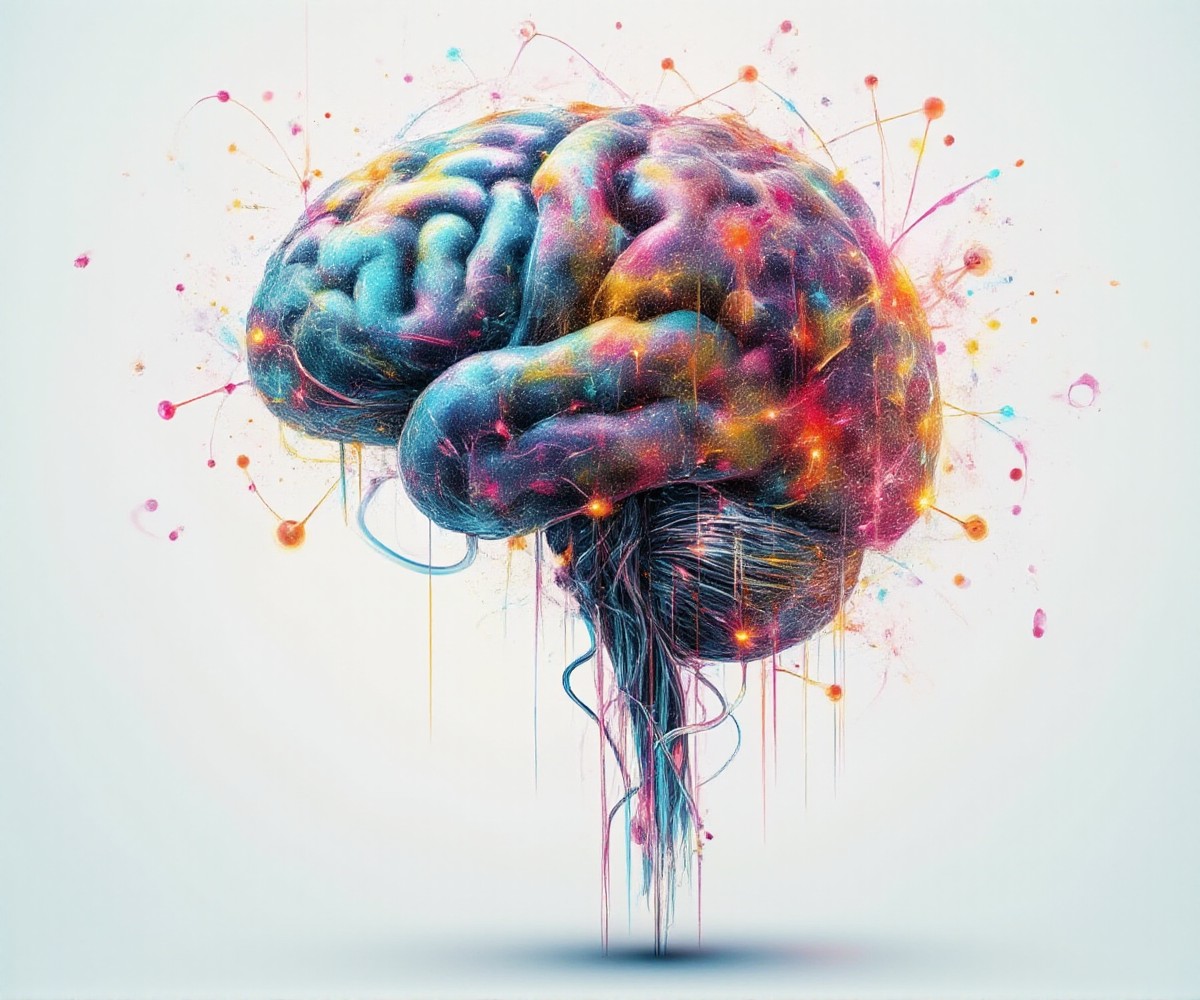Double exposure, a unique artistic style, is used to create dynamic and visually stunning images. This style combines two or more photographs into a single picture, resulting in a unique blend of colors, patterns, and subjects. In this case, the double exposure approach is merged with Neumorphism, which is another visually appealing technique. Neumorphism replicates the soft, glowing interface designs commonly seen in digital devices like mobile phones, reimagining them in a whole new way. The resulting image resembles a 3D representation of human brain with colorful synapses, showcasing both the simplicity and complexity of this vital organ. The composition focuses on a central focal point, enhancing the perception of depth and making the overall image engaging. The background is clean and clutter-free, with soft gradients and pastel overlays to emphasize a dreamlike quality. The use of bokeh highlights adds a sense of moodiness and depth to the image, while the cinematic lens rendering creates a silky smooth texture that mimics the way digital devices look visually. The dreamlike effect further extends to the soft foreground blur, as well as the creamy light falloff, giving the brain an almost eerie, otherworldly quality. The glossy reflections provide an eye-catching contrast, while the use of glowing particles and digital circuitry create an aesthetic that’s both visually appealing and scientifically intriguing.

